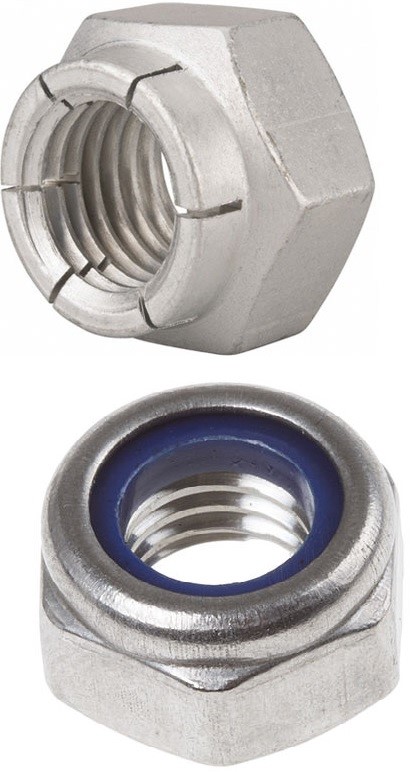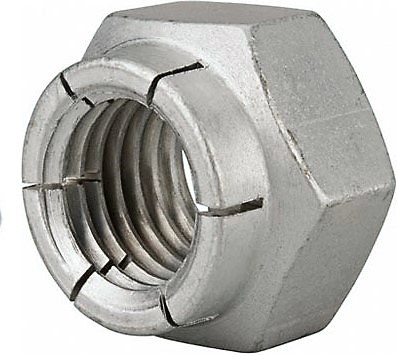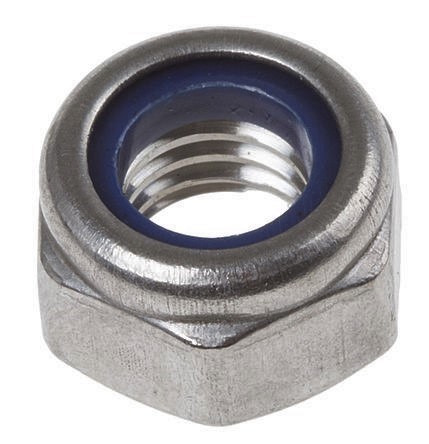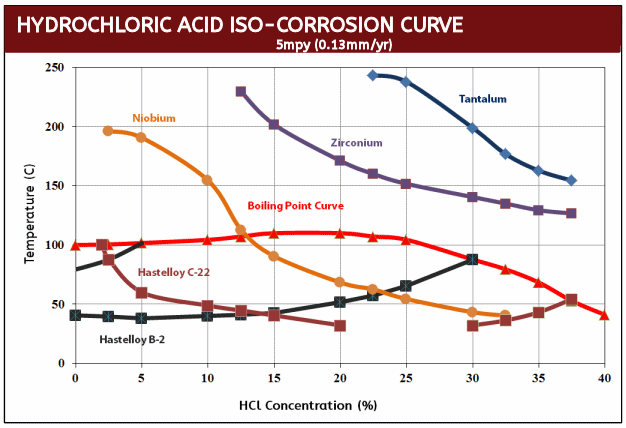When nickel, titanium or zirconium alloys are not enough...
- Immune to numerous acids and chemicals (corrosion tables)

- Better corrosion resistance than nickel alloys, titanium or zirconium
- High strength and stiffness in vacuum and inert gas up to 2000°C (3600°F)
- Can become brittle when used in oxygen above 300°C
- High purity and biocompatibilty
- Physical Properties
- Tantalum grades, specifications and chemistry
- Tantalum lock nut features and benefits
- Datasheet for tantalum
Tantalum lock nuts are best known for its unmatched corrosion resistance and chemical inertness. Tantalum nuts have a similar corrosion resistance to that of glass, but all of the typical mechanical and electrical properties of a metal.
Tantalum lock nuts are also extremely stable at high temperatures, since tantalum has a melting point around 3000°C. High temperature applications require vaccum or inert gas since tantalum may embrittle when used in oxygen rich environments above 250°C. Tantalum nuts are also one of the most bio-compatible metals available and is also radio-opaque due to its high density (16.68 g/cm3).
All tantalum lock nuts are available in commercially pure tantalum and tantalum 2.5% tungsten (Ta-2.5%W).
Contact us to see if your required tantalum lock nuts are in stock and how our engineers may help you with your tantalum fastener application.
Resources: Tantalum Torque Spec
Tantalum Locknut Features and Beneifts
A tantalum locknut resists loosening from vibrations and torque. One of the most common styles is a prevailing torque locknut. This kind of tantalum locknut has a prevailing torque feature which deforms elastically, preventing it from freely spinning like a standard nut.
The two most common and reliable forms of prevailing torque locknuts are the flexloc style and the polymer insert lock nut. A tantalum flexloc nut is all-metal in composition with a segmented collar that creates six “locking fingers,” that act as a spring. Tantalum polymer insert lock nuts are often referred to as nylon insert locknuts, although various high performance polymers can be used for the screw threads to “bite into.” Both flexlock and polymer insert locknuts are available in both hexagonal and 12 point configurations.
All Metal Flexloc Lock Nut |  Polymer/Nylon Insert Lock Nut Polymer/Nylon Insert Lock Nut |
|
|
Other all metal lock nuts available include the tantalum stover and elliptical styles. Though these styles are often a cheaper initial cost, they are less reliable than the flexloc style. As these styles delivering less prevailing torque cycles and often result in more failures, the flexloc style is a better investment for both reliability and cost savings.
Tantalum Grades, Specifications and Chemistry
Tantalum (Commercially Pure)
Commercially pure tantalum metal is 99.95% pure tantalum has some o the best corrosion resistant properties of any metal. While its corrosion resistance is exceptional, it is relatively soft and mechanically similar in strength to copper.
Tantalum Specifications: UNS R05200, ASTM B521, ASTM B708, ASTM B365

Tantalum 2.5% Tungsten (Ta-2.5W)
This grade of tantalum alloyed with 2.5% tungsten provided better overall strength while maintaining its exception corrosion resistant properties. For tantalum fastener applications this is usually preferred.
Tantalum 2.5% Tungsten Specifications: UNS R05200, ASTM B521, ASTM B708, ASTM B365

Physical Properties
- Density 16.6 g/cc
- Melting Point 3290 K, 2996°C, 5462°F
- Boiling Point 5731 K, 6100°C, 9856°F
- Coefficient of Thermal Expansion (20°C) 6.5 x 10(-6) / °C
- Electrical Resistivity (20°C) 13.5 microhms-cm
- Electrical Conductivity 13% IACS
- Specific Heat .036 cal/g/°C
- Thermal Conductivity .13 cal/cm(2)/cm°C/sec
Tantalum Tensile Data

Tantalum Iso-Corrosion Curves


Tantalum Corrosion Resistance Table
TANTALUM SHOWS A NIL CORROSION RATE TO THE FOLLOWING MEDIAFor all temperatures up to at least 302F (150C) unless otherwise indicated | |||
Acetic acid | Chlorine, dry, <250°C (480°F) | Maleic acid | Potassium sulfate |
TANTALUM SHOWS LIMITED CORROSION RESISTANCE TO THE FOLLOWING MEDIA | |||
Air,>300°C (570°F) | Hydrogen, >300°C (570°F)Hydrogen fluoride | Potassium hydroxide, conc. | Sodium hydroxide, conc. |
